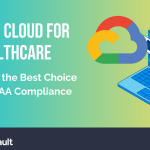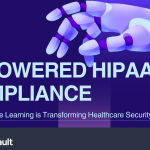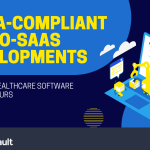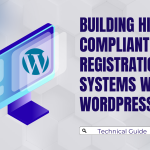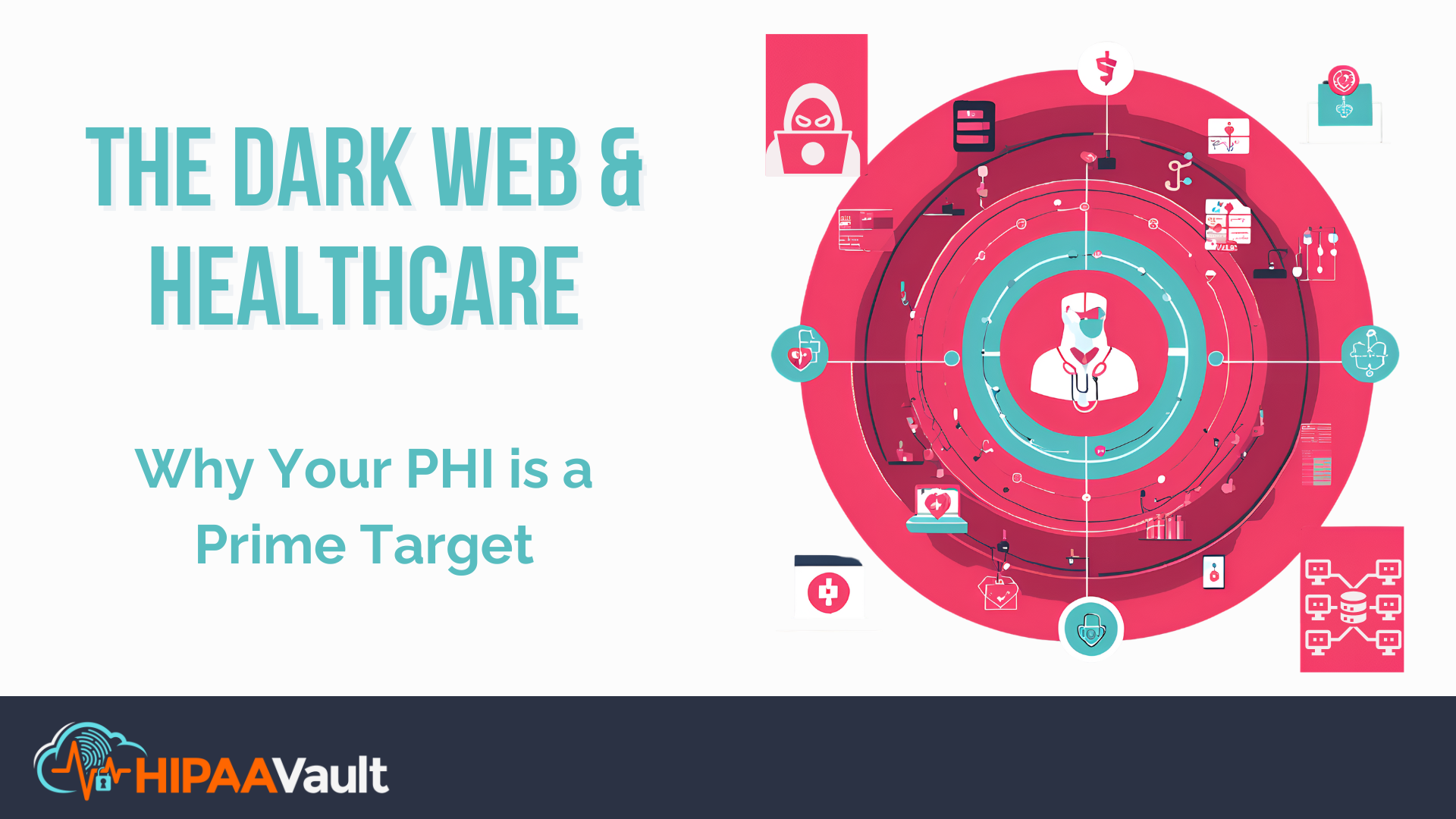
Introduction
The modern healthcare industry sits at the crossroads of innovation and vulnerability. While digitization of patient records has brought significant efficiencies, it has also opened the doors to a new era of cybercrime. In 2023, over 133 million patient records were exposed in healthcare-related breaches, according to HHS.gov. This number highlights just how heavily targeted PHI has become—especially on the dark web.
Protected health information (PHI) isn’t just about medical records—it’s a trove of personal, financial, and health data, often stored together in a single digital file. This level of detail is a goldmine for cybercriminals, fueling a black market where complete patient profiles can fetch hundreds of dollars apiece. Unlike a stolen credit card that can be canceled, PHI offers long-term, reusable value.
This post dives into the methods attackers use, why PHI is so attractive, and the concrete actions your organization can take—with the support of HIPAA Vault—to stay compliant and secure in a dangerous digital world.
Why PHI is So Valuable on the Dark Web
PHI’s high value stems from its completeness, permanence, and potential for exploitation. While stolen financial data might be useful for a single fraudulent transaction, PHI enables long-term abuse—making it an enduring commodity on the dark web.
These files typically include:
- Full names and addresses
- Social Security Numbers
- Insurance policy data
- Medical histories
- Prescription details
- Billing information
Cybercriminals can use this information in various ways:
- Identity Theft & Credit Fraud: With a Social Security number and date of birth, attackers can open credit cards, apply for loans, or commit tax fraud.
- Medical Identity Theft: Fraudsters can receive care or prescriptions under a stolen identity, sticking the victim with medical bills and corrupted health records.
- Insurance Fraud: Fake claims can be filed using real patient data, leading to revenue loss for providers and insurers alike.
- Extortion: Criminals may threaten to expose sensitive health details unless a ransom is paid.
The dark web reflects this value. According to industry research, a single medical record can sell for $250–$1,000, far surpassing the value of stolen credit cards, which rarely exceed $5.
1. How Cybercriminals Exploit Healthcare Data
Once healthcare data is stolen, it can be manipulated and sold through an underground marketplace with relative ease. Cybercriminals often operate in well-organized syndicates with the skills to monetize data quickly.
Selling PHI for Identity Theft and Fraud
The most direct use of PHI is identity theft. Hackers compile patient profiles from multiple breaches, assembling a composite identity that is more believable and harder to trace. This synthetic identity is then used to commit various types of fraud—from opening credit accounts to purchasing equipment in the victim’s name.
What makes PHI so potent in this scenario is its authenticity. Medical records include verified data points that financial institutions trust—making it easier for fraudsters to bypass traditional safeguards.
Ransomware Attacks Targeting Healthcare Organizations
Ransomware has become a go-to weapon for hackers targeting the healthcare sector. These attacks typically involve the encryption of entire databases, making vital systems and patient records inaccessible until a ransom is paid.
Hospitals, clinics, and specialty providers are particularly vulnerable due to their reliance on real-time data access. Delays in treatment can have life-threatening consequences, pressuring organizations to pay ransoms quickly—often without reporting the breach.
According to IBM’s Cost of a Data Breach Report, healthcare has the highest average breach cost of any industry—now more than $10.93 million per incident.
The Cost of a Single Data Breach
The consequences of a breach ripple across financial, operational, and legal domains. Fines for HIPAA violations can reach $1.5 million per year per violation category, while reputation damage and lost patient trust can be even more devastating long-term. Legal actions, insurance claims, and remediation costs only add to the burden.
2. Common Attack Methods
Cybercriminals don’t rely on a single tactic—they exploit human error, technical vulnerabilities, and lack of oversight. These are some of the most prevalent attack methods:
Phishing and Social Engineering Attacks
Email remains the most common vector for cyberattacks in healthcare. A cleverly disguised phishing email might prompt a staff member to click a malicious link or download a compromised file, thereby granting attackers access to the network.
Even seemingly benign actions—like resetting a password via an insecure link—can allow an attacker to escalate privileges and move laterally through the system.
Training and awareness are key here, but prevention must also include email filtering, link scanning, and user behavior analytics—all components of HIPAA Vault’s managed security approach.
Insider Threats and Employee Negligence
Whether accidental or malicious, insider threats continue to plague healthcare environments. A misplaced laptop, improperly disposed paperwork, or snooping employee can expose massive amounts of PHI.
Negligence often stems from a lack of security policies or inadequate enforcement. Organizations need clear rules, training, and monitoring tools to prevent and detect insider threats early.
Exploiting Vulnerabilities in Outdated Systems
Legacy healthcare systems often operate on outdated platforms with unpatched security flaws. Many are no longer supported by the vendor, which means known vulnerabilities are left wide open for exploitation.
Even modern applications can be vulnerable if misconfigured. Regular security audits, penetration tests, and patch management are vital steps—offered as part of HIPAA Vault’s proactive compliance services.
3. How to Protect PHI from Dark Web Exposure
Combating these threats requires a multi-layered defense strategy, rooted in compliance, best practices, and constant vigilance.
Proactive Security Measures
Preventive measures form the foundation of PHI security:
- Encryption ensures that even if data is stolen, it remains unreadable without decryption keys. HIPAA Vault encrypts PHI both at rest and in transit using AES-256 protocols.
- Multi-Factor Authentication (MFA) is crucial to verify user identities and block unauthorized access—even if credentials are compromised.
- Least Privilege Access Controls limit data access based on user roles, reducing risk exposure across departments.
Together, these controls provide a foundation for HIPAA compliance and data protection.
Importance of Continuous Monitoring and Threat Intelligence
Threats evolve constantly. Relying on reactive defenses is no longer sufficient. Continuous monitoring provides real-time visibility into system behavior, allowing organizations to detect unusual activity and respond swiftly.
HIPAA Vault deploys intrusion detection systems (IDS), security event monitoring, and automated threat intelligence to identify and mitigate risks in real-time.
Our cloud environments on Google Cloud Platform (GCP) are further protected by FedRAMP-certified infrastructure, giving healthcare providers the highest level of cloud security available.
How HIPAA Vault’s Managed Security Services Detect and Prevent Breaches
HIPAA Vault’s managed services offer an end-to-end security posture that includes:
- 24/7/365 live support with <15-minute response times
- Encrypted email and secure file transfer protocols
- Penetration testing and cybersecurity scanning
- Kubernetes and containerized hosting for modern app deployments
- Log management and compliance reporting
Our security-first approach ensures that all layers of your IT stack—from network to application—are configured and monitored for PHI protection.
4. Is Your Data Compromised?
Even with the best defenses, breaches can happen. The key is a fast, structured response that minimizes impact and ensures compliance.
Steps to Mitigate the Damage of a Data Breach
- Isolate affected systems immediately to contain the breach and prevent lateral movement.
- Engage your incident response team—HIPAA Vault’s experts are available around the clock to help guide containment and remediation.
- Assess the scope of the breach through forensic analysis to determine what data was accessed, and how.
- Notify stakeholders and regulatory bodies, following HIPAA’s breach notification rules. This includes HHS and, in some cases, media outlets and affected individuals.
- Initiate recovery efforts, including patching vulnerabilities, restoring from backups, and reviewing access logs for further indicators of compromise.
Legal and Compliance Reporting Requirements
HIPAA mandates notification to affected parties within 60 days of discovery, but many states have stricter deadlines. Working with a compliance expert ensures you don’t miss a critical requirement—or incur additional penalties.
Why Partnering with a HIPAA-Compliant Cloud Provider Is Crucial
Organizations that try to navigate breach recovery alone often underestimate its complexity. By partnering with HIPAA Vault, you gain access to a team that understands the legal, technical, and operational aspects of compliance.
Conclusion: Final Thoughts on the Rising Threat of PHI Theft
The threat landscape is only growing more complex. As cybercriminals continue to target the healthcare sector, the protection of PHI can no longer be an afterthought—it must be a strategic priority.
Whether you’re a small clinic or a large healthcare system, securing your environment means investing in HIPAA-compliant infrastructure, ongoing threat detection, and a trusted partner who understands your unique challenges.
That’s where HIPAA Vault comes in.
With decades of experience, industry-recognized cloud solutions, and 24/7 support, we help you protect your data before it ever has a chance to reach the dark web.
👉 Secure your PHI today.
Talk to a HIPAA compliance expert at HIPAA Vault.


